Jesters in Theatre
Jesters and theatre have journeyed together, from the lively courts of the past to the stages of today. The impact of jesters on theatrical entertainment can still be felt in the comedic characters, wit, and humour that enrich the world of theatre, making audiences laugh and ponder the human experience.
Origins of jesters in theatre
The history of the jester and theatre goes back to ancient times. Across the world there are examples of jesters making an appearance in either prominent characters or archetypes.
In ancient Greece comedic performances were an integral part of festivals and religious ceremonies. These early forms of comedy laid the foundation for the future development of jesters and their role in theatre. The two main theatrical genres in ancient Greece were tragedy and comedy. Tragedies, written by playwrights like Aeschylus, Sophocles, and Euripides, explored themes of human suffering, fate, and morality. Comedies, written by playwrights like Aristophanes, used satire and humour to critique society and politics. These early forms of comedy laid the foundation for the future development of jesters and their role in theatre.
In Italy, the Commedia dell’arte used the characteristics of the trickster and jester archetype during the Renaissance period. Commedia troupes featured stock characters, including the zanni or clown-like figures, who performed physical comedy and improvised witty dialogue, akin to the antics of jesters. These performances included roles for both male and female jesters.
During the time of the court jester, many professional fools performed as a group or solo, cracking jokes, singing, and providing entertainment to the court. Jesters held a privileged position in the royal court, serving as entertainers and confidants to the monarch and nobility.
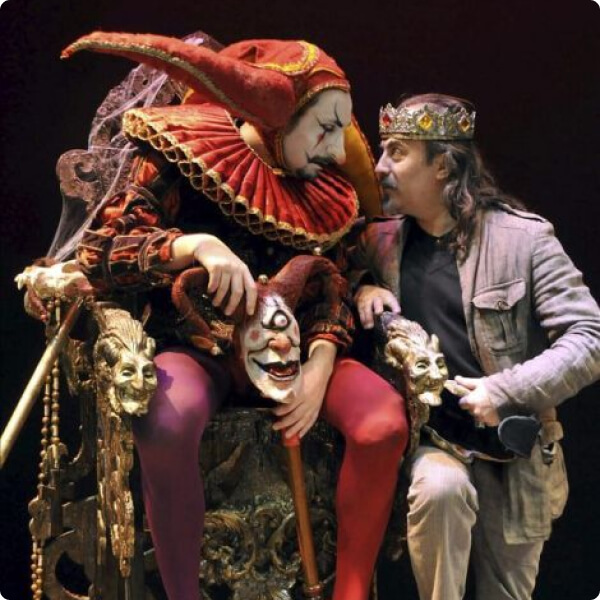
El Rey y el Bufón | Morboria Teatro
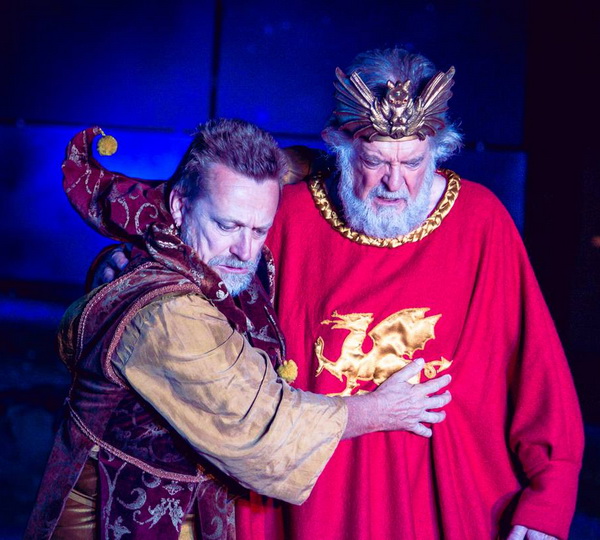
Michael Hurst as The Fool and Michael Neill as Lear in ‘King Lear’ | Oliver Rosser
William Shakespeare, the renowned playwright of the 16th century, skillfully incorporated jesters, and comedic characters into his works. In many of Shakespeare’s plays, jesters or fools play significant roles, both as standalone characters and as part of the larger narrative. These characters, often referred to as “fools” or “clowns,” bring a lighthearted and mischievous energy to the stage, providing comic relief amidst the intense drama.
Shakespeare’s jesters are not merely jesters, but multifaceted characters who possess sharp intelligence, wisdom, and the ability to speak truth in a way that is both entertaining and thought-provoking. They act as social commentators, pointing out hypocrisy, challenging authority, and illuminating the flaws of the characters around them.
Using jesters, Shakespeare explores the interplay between laughter and tragedy, juxtaposing comedy, and drama to create a rich and complex theatrical experience. The jesters’ presence reminds the audience of the inherent contradictions and follies of the human condition, offering a reflective lens through which to view the larger themes of the plays.
Modern theatre continues to draw inspiration from the jester archetype. Comedic characters and clowns carry on the spirit of jesters, captivating audiences with their humour and unconventional performances.
Jester archetype examples in theatre
Jesters sometimes embodied deeper symbolism within plays. They represented the wisdom found in folly or the blurred lines between reality and illusion. Their witty remarks and insightful observations added layers of meaning to the overall narrative, enriching the audience’s interpretation.
The jester archetype examples in theatre include:
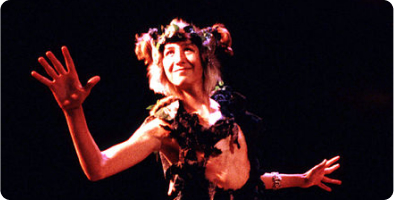
Puck | Carmel Shakespeare Festival
Puck from “A Midsummer Night’s Dream”
This is an example of how a playful and mischievous character can add elements of whimsy and provide comic relief to a story. Puck exhibits a quick wit and sharp tongue, engaging in wordplay and clever banter. His dialogue is filled with puns, clever remarks, and wordplay, which is a hallmark of jesters who rely on their verbal dexterity to entertain and amuse. While Puck is mischievous and playful, he also possesses a keen sense of observation. He makes insightful remarks about the nature of love and the human condition, displaying a depth of understanding beneath his humorous exterior. This ability to offer astute observations aligns with the jester’s role as a commentator on society and human behaviour.
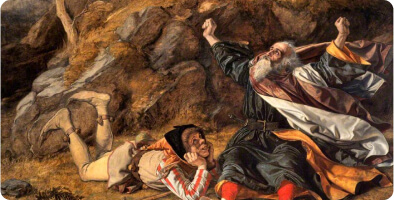
King Lear and the Fool in the Storm | William Dyce
The Fool in “King Lear” is another example of the Shakespearean Fool
The jester brand archetype is portrayed by The Fool in this story as he serves as King Lear’s court jester. He acts as a trusted companion and entertainer who holds a unique position of privilege and freedom to speak their mind. This aligns with the traditional role of jesters in the royal court, where they provided entertainment and lightheartedness to the monarch and courtiers. The Fool’s primary function is to provide comic relief amidst the intense and tragic events of the play. His humorous remarks, jokes, and jests serve as a temporary reprieve from the serious and dark themes of madness, betrayal, and familial turmoil present in “King Lear.”
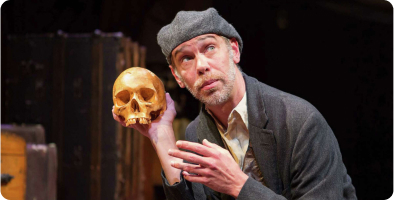
Louis Butelli in “Gravedigger’s Take” | Teresa Wood/Folger Theatre
The Gravedigger in “Hamlet” is another humorous and ironic figure
In Shakespear’s play this jester archetype brings a touch of dark comedy to the sombre atmosphere of “Hamlet.” His witty banter and macabre humour add a contrasting layer to the exploration of mortality in the play.
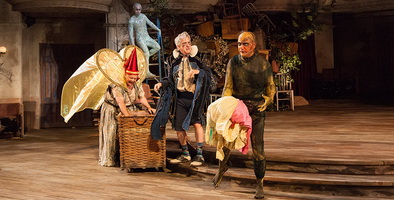
Trinculo & Stephano in “The Tempest” | The Old Globe
In Shakespear’s play “The Tempest”
we can see the brand archetypes in the duo of Trinculo and Stephano. Trinculo and Stephano’s introduction in the play immediately establishes their comedic presence. They stumble upon the island and encounter the misshapen creature Caliban, leading to humorous interactions fueled by their own bumbling and chaotic circumstances. Their banter, misunderstandings, and physical comedy generate laughter and lighten the overall tone of the play. Trinculo and Stephano’s presence on the island also serves as a form of social commentary, subverting the existing power structures. They plot to overthrow Prospero, the rightful ruler of the island, in a comical and misguided attempt to seize power. Their subversive actions highlight the folly and absurdity of power struggles, adding a layer of satire to their role in the play.
Jesters are fun loving characters who sometimes bring much needed wit and depth to stories.

